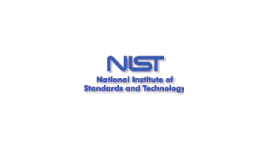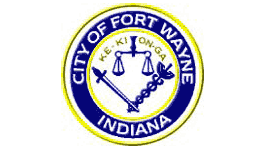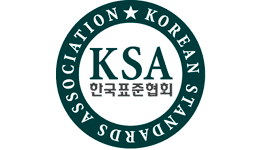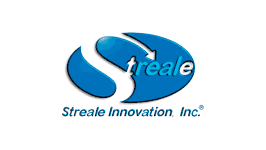Special Tributes and Citations
MindPro was made possible through the asserted efforts and kind contributions of many people and organizations. This section provides a listing of the key contributors and credits their guidance, discussions, work, materials, copyrights, publications, presentations, and ideas. Thanks to such contributors, the benefits of Six Sigma as well as other process improvement initiatives can now be realized by large, medium, and small organizations, as well as individuals seeking professional advancement and recognition through coaching and development:
 |
The Ira. A. Fulton School of Engineering, Arizona State University is provided a special acknowledgement as the primary affiliate of the Dr. Mikel J. Harry Six Sigma Management Institute. The ASU Six Sigma portfolio of degree programs, courses, certifications, and on-line offerings provide individuals and global corporations with world-class knowledge. The long-standing association between ASU and Dr. Harry is highly esteemed and gratefully appreciated. |
 |
Kevin Kennedy Associates offers world-class Product and Process Development, Organizational MentoringTM
Solutions, Failure Analysis and Recovery, and Life Sciences Consulting. In stringent adherence to Best
Practices in product and process development, they comply with regulatory standards and employ
comprehensive methods to minimize and manage risk associated with the product or process. Their contribution of life-like
simulations and animations greatly enriched the Six Sigma curriculum and is deeply appreciated. |
 |
The Society of Manufacturing Engineers is gratefully acknowledged as a contributing affiliate
of the ASU-SSMI relationship. SME is the world's leading resource Where Manufacturing
Comes Together - both people and information - to advance manufacturing knowledge. The
association between SME, Arizona State University, and the Six Sigma Management Institute
is deeply appreciated. |
 |
The Dr. Mikel J. Harry Six Sigma Management Institute mission is to explore new and
innovative ways to disseminate the power of Six Sigma. SSMI’s main objective is to research
and develop effective delivery methods so that the cost of training can be drastically
reduced, making Six Sigma affordable for individuals and businesses of all sizes. This goal was realized when SSMI partnered with
the Ira A. Fulton School of Engineering at Arizona State University (ASU) for the delivery of the joint ASU – SSMI Online Six Sigma
Certification Programs. |
 |
Founded in 1901, NIST is a non-regulatory federal agency within the U.S. Commerce Department's
Technology Administration. NIST's mission is to develop and promote measurement, standards,
and technology to enhance productivity, facilitate trade, and improve the quality of life. NIST carries
out its mission in four cooperative programs: NIST Laboratories, Baldrige National Quality Program,
Manufacturing Extension Partnership, and the Advanced Technology Program. A special tribute is given to NIST for contributing
the NIST/SEMATECH Handbook of Statistical Methods to the MindPro project. This addition to the software is gratefully
acknowledged and appreciated. |
 |
Fort Wayne has implemented Six Sigma to improve customer service and increase the effectiveness of
city government. Data based decision-making and empowerment of employees are key components to
the success of the program. A special tribute is given to Mayor Graham Richard for his insightful vision
and steadfast leadership of Six Sigma within city government. The Fort Wayne Improvement Case Studies
represent an exemplary set of testaments to the power of Six Sigma and are immensely appreciated. |
 |
The National Science Foundation (NSF) is an independent federal agency created by Congress in 1950 to
promote the progress of science; to advance the national health, prosperity, and welfare; to secure the national
defense… The contributing influence of NSF is felt within the field of Six Sigma in many ways, both directly and
indirectly. |
 |
Minitab Inc. creates and markets statistical software that enables those who teach or
perform data analysis to obtain accurate, reliable, and easy-to-use solutions. A special thanks
is extended to Minitab for their kind cooperation and Six Sigma contributions throughout
the years. |
 |
Established in 1962, the Korean Standards Association leads the industrial development of the nation in
the van of the 21st century technical competitive age on the basis of 40 years of accumulated know-how
in such areas as education and training, research, KS/ISO certification, promotional activities, international
cooperation, etc. Their highly respected association with Arizona State University and the Six Sigma
Management Institute is greatly appreciated. |
 |
Founded in 1987, Quality Associates International is a full service Quality and Reliability consulting firm.
Their contribution to the field of Six Sigma and MindPro is very much appreciated. |
 |
Streale Innovation, Inc. is a team of business and technical consultants that work together on client
projects to provide Six Sigma best practices, Performance Measurement, and Training & Development
aimed at the FDA-regulated and Financial Services markets. Their contribution to Six Sigma and the
MindPro project is appreciated and highly esteemed. |
 |
The United States Navy, Office of Naval Research is recognized for their Best Manufacturing Practices Program
and Producibility Measurements for DoD Contracts. The BMP Program was created in 1985 to help businesses
identify, research, and promote exceptional manufacturing practices, methods, and procedures. Its objective
is to empower defense and commercial customers to operate at a higher level of efficiency and effectiveness.
Their diligence and dedication to the pursuit of excellence through Six Sigma is admired and appreciated. |
Acknowledgements:
Alan Leduc, President: BOPI Solutions
Cosmin Ionica, Senior Programmer: Six Sigma Management Institute
Sandy Harry, Chief Financial Officer: Six Sigma Management Institute
Peter Crouch, Dean: Ira A. Fulton School of Engineering, Arizona State University
Jeff Goss, Assist. Dean: Ira A. Fulton School of Engineering, Arizona State University
Phong Vu, Chief Executive Officer: Six Sigma Management Institute
Reigle Stewart, Chief Operating Officer: Six Sigma Management Institute
Craig A. Elden, Chief Information Officer: Six Sigma Management Institute
Connie Januzzi, Senior Administrator: Six Sigma Management Institute
Ian Firth, Senior Programmer: Six Sigma Management Institute
Minitab, Inc: Minitab Statistical Analysis Software
Microsoft Corp.: Excel, Power Point, and Word
Streale Innovation, Inc: Streale Enterprise Six Sigma Software
SME: Society of Manufacturing Engineers
KSA: Korean Standards Association
SSGR: Six Sigma Global Registry
ASQ: American Society of Quality
SSA: Six Sigma Academy
Contributors:
Alan Leduc - BOPI Solutions: Digital Project Review
Accel-Team Ltd: Force Field Analysis Diagram
Achats-Industriels: Six Sigma Concepts
Acme Constructions Pty, Ltd: Punchlist Report Example
Actuate Corporation: Enterprise Reporting Applications
Allied Signal, Inc: Jet Engine
Allied Signal, Inc: Manufacturing Facility
Applied Research Associates, Inc: Tankcar Impact Simulation
Arizona State University, Ira A. Fulton School of Engineering
Berkeley University: Regression Simulation
Blackthorne Publishing Company: Fishbone Diagram Builder
Boccio, John - Physics & Astronomy Department at Swarthmore College: Galaxy Collision Simulation
Bowling Green State University, Physics Department: Measurement Video
Brigham Young University: John Doe Black Belt Project Example
Brooks, David W. - Center for Curriculum and Instruction, University of Nebraska-Lincoln: Amperometric Oxygen Measurement
Casazen.com: Kanban Card
Chapman, Alan - Businessballs.com: General Reference
City Colleges of Chicago: Skinner Box Illustration
City of Fort Wayne Indiana. Mayor Graham Richard: Case Studies in Six Sigma
Claremont Graduate University: Hypothesis Test for a Mean
Claremont Graduate University: Hypothesis Testing Simulation
Claremont Graduate University: Sampling Distribution Simulation
CMU's Robotics Institute, Darwin2K: Robot Part Placement Simulation
College of Business, Auburn University: Award Ceremony Video
Cryer, L. - Northern College: Pavlov's Dog and Stimulus Response
Debevec, Paul - Computer Science Division, University of California at Berkeley: Falling Dominos Video
Earth Sciences Department at the University of California, Santa Cruz: Southern California Earthquake Simulation
Edison Automation Inc: Factory Performance Displays
Engineering Dynamics Corporation: EDSMAC4 Multi-vehicle Intersection Crash Simulation
Esterline Aerospace and Defense: Normal Distribution Graphic
Evalid Inc: Software Development Process Map
Evergreen State College: Choas Theory and Fractal Simulation
Federated States of Micronesia, College of Micronesia: Normal Distribution
France, L., Girault, A., Gascuel, D., Espiau, B.: Sensor Modeling for a Walking Robot Simulation
Garrison, Daniel B. - Flee Boston Financial: Excerpts from Introduction to Six Sigma
General Electric Corporation: Website Orientation
Georgia Tech, GVU Center: Somersault Pike Simulation
Grant DUE 9751307: Statistical Simulators and Animations
Hodgins, Jessica K. and Wooten, Wayne - Georgia Institute of Technology: Diving Simulation
Hyperion Solutions Corporation: Enterprise-Class Business Performance Management Solutions: Metrics Dashboard
iSixSigma: Internet Six Sigma Community and Forum Website
Juran's Quality Handbook: Juran Trilogy
Ketkale Group of Industries: Machine Drill Press
Kevin Kennedy Associates: Factory Simulation, Process Simulation, Hospital Simulation, Thermal Simulation, Airbag Simulation,
Crash Simulations, and Robot Simulations
Kotelnikov, Vadim - Ten3 Business e-Coach, version 2005a. On-Line Business Management Handbook and Resource
Lane, David M. - Rice Virtual Lab: HyperStat On-Line Statistics Handbook
Lane, David M. - Rice Virtual Lab: On-Line Case Studies
Lee, Gene S. - University of British Columbia: Robotics Animation Simulation Platform
Many Information Systems, Inc: Service Simulation
Mastascusa, E. J. - Bucknell University: Problem Definition Excerpt
Merriam-Webster On-Line Dictionary: Definitions
Microsoft Corporation: Project Charter Example
Mind Tools Ltd: Force Field Analysis Diagram
Missouri State University: Frequency Polygon Simulation
Motronic, Inc: Electronic Circuit Board
Multidata TPS, Inc: Pair of Dice
N-able Technologies Inc: The N-vision Dashboard
National Aeronautics and Space Administration, Air Traffic Shutdown Study: Flight Pattern Simulation
National Aeronautics and Space Administration, Mars Exploration Program: Machinist Video Making Parts
National Aeronautics and Space Administration, Mars Exploration Program: Mars Exploration Rover Terrain Simulation Video
National Aeronautics and Space Administration, Mars Exploration Program: Planetary Photo Journal
National Aeronautics and Space Administration: Airline Cockpit Simulation
National Institute of Standards and Technology: NIST/SEMATECH e-Handbook of Statistical Methods
NAVAIR Corporation: Navair Six Sigma Deployment Model
Nimmer, Larry - International Student Film Festival: Light Bulb by Sam Kapoi
Nipponico Company: Kanban Card
NKG Spark Plugs, Inc: Spark Plug Picture
Office of Fusion Energy, US Department of Energy: Fusion Simulation
Office of the Under Secretary of Defense for Acquisition Technology and Logistics: Identifying Basic Improvement Curve Theories
Ogden, R. Todd - Dept. of Statistics, Univ. of South Carolina: Dice Roll Simulation
Ohsshi Iron Works: Kanban Card
Ontario, Ministry of Agriculture, Food and Rural Affairs: Maslow's Heirarchy of Human Need
Orbitform Group, LLC: Upper Bracket Stamping on Sub-Assembly
Palm Inc: Zire 71 Palm Data Collection
Paul Kayfetz, Inc: Driving Computer Animation
Power Performance, Inc: Leadership Quotes
PowerSteering Software Inc: Six Sigma Project Management Tool
Product Development Consulting, Inc: The Customer Value Map
Public Health Institute: Fishbone Diagram
Quality Digest, Six Sigma Survey Results: Breaking Through the Six Sigma Hype, Dirk Dusharme (November 2001)
Quality Digest, Six Sigma Packs a Punch, Dirk Dusharme (November 2003)
Raytheon Corporation: Six Sigma Tools Umbrella
Rice Virtual Lab: National Science Foundation's Division of Undergraduate Education
Rizhao King Dang Co., Ltd: Open Sign
Rock Castle Construction: Reconciliation Form
Russ, John C. - Materials Science and Engineering Dept., North Carolina State University, Raleigh, NC: Blacksmith Video
SaturnFans: Picture from Backseat of Saturn Automobile
Smith, J.: Fishbone Diagram
Southern Maryland Electric Cooperative: Light Bulb with Dollar Sign
Stanford University: Birthday Date Simulation
Stanford University: Probability and Quantile Simulation
StatSoft, Inc: The StatSoft Electronic Statistics Handbook (On-Line Resource)
Strategos, Inc: Lean-Manufacturing Website
Strategos, Inc: Process Map and Examples
Syque, Inc: Improvement Encyclopedia Website
United States Navy: Best Manufacturing Practices Program Website
United States Navy: Classroom Instructor Video
University of California, Los Angeles: Lego Robotic I Project
University of Cambridge, Department of Industrial Design Engineering: FMEA Guidelines and Example
University of Cambridge, Department of Industrial Design Engineering: Process Mapping and Design Example
University of Illinois at Urbana-Champaign, Department of Statistics: Regression Simulation
University of Iowa, National Advanced Driving Simulator: Alcohol Impairment Study Simulation
University of Iowa, National Advanced Driving Simulator: High-Frequency Actuators
University of Iowa, National Advanced Driving Simulator: Main Control Room and Operators
University of South Carolina, Dept. of Statistics: Histogram Bin Size Simulation
Value Based Management: Force Field Analysis
Virtual Reality Lab, Swiss Federal Institute of Technology: Human Motion Simulation
Visionary Labs, Benjamin J Borkowski: Crowd Simulation
Vital Enterprises, Inc: 6S Evaluation Form
Volkswagen of America, Inc: Yellow Volkswagen Picture
Welch, Jack: 21 Points for Winning
West, R. Webster - University of South Carolina, Department of Statistics. Histogram Bin Size Simulation
Recognition:
Historically speaking, Six Sigma has evolved from a quality improvement tool in the mid 1980’s to a fact-driven system of business
management in the 2000’s. Over the last 20 years there have been many events and contributions that have shaped Six Sigma.
Even today, the evolution of Six Sigma continues – growing in both power and diversity, throughout the world. The purpose of
this section is to provide recognition of those individuals who played a key role in this evolution:
Robert Galvin, Motorola
Bill Smith, Motorola
Mikel Harry, Motorola
Jack Germain, Motorola
Richard Buetow, Motorola
Art Sundry, Motorola
Dick White, Motorola
Hank Scutoski, Motorola
Richard Schoreder, Motorola
Ron Lawson, Motorola
Tom Cheek, Texas Instruments
Jack Prins, Motorola
Doug Mader, Motorola
Steve Zinkgraf, Motorola
Mike Carnell, Motorola
Greg Brue, Motorola
Gary Cone, Motorola
John Hathaway, Motorola
Dave Dupree, Motorola
Reigle Stewart, Motorola
Kjell Magnusson, Asea Brown Boveri
Mike Daniels, Asea Brown Boveri
Sunne Carlson, Asea Brown Boveri
Jack Welch, General Electric
Gary Reiner, General Electric
Larry Bossidy, Allied Signal
Don Linsenmann, DuPont
Dave Antis, Motorola
Tom Hughes, Allied Signal
Skip Weed, Motorola
Bob Stewart, Motorola
Mario Perez-Wilson, Motorola
Marty Rayl, Motorola
John Lupienski, Motorola
Phong Vu, Ford Motor Company
Bibliography:
Addelman, S. and Kempthorne, O. 1961. Some Main-Effect Plans and Orthogonal Arrays of Strength Two. Ann. Math. Stat. 32. 1167-1176.
Albright, T. L. and H. Roth. 1993. Controlling Quality on a Multidimensional Level. Journal of Cost Management Spring: 29-37.
Albright, Thomas L. and Harold P. Roth. 1992. The Measurement of Quality Costs
Amsden, Robert T. and others. 1989. SPC Simplified: Practical Steps to Quality. White Plains, NY: Quality Resources
Anderson, C. W. and Loynes, R. M. 1987. The Teaching of Practical Statistics. John Wiley and Sons, New York, U.S.A.
Anderson,V.L. and McLean,R.A. 1974. Design of Experiments A Realistic Approach. Marcel Dekker, Inc. NY.
Andrews, D. M. and Herzberg, A. 1985. Data, A Collection of Problems from Many Fields for the Student and Research Workers. Springer-Verlag, New York, U.S.A.
Andrisi, Jean-Paul. 1991. Space Manufacturing Quality Through Statistical Process Control. ESA Electronic Components Conference
Atkinson, A.C. 1985. Plots,Transformations and Regression. Oxford U. Press, NY.
Atkinson,A.C. and Donev, A.N.1992. Optimum Experimental Designs. Oxford U. Press,NY.
Bancroft, T. A. and Huntsberger, D. V. 1961. Some Papers Concerning the Teaching of Statistics. Iowa State University Press, Ames, Iowa, U.S.A.
Barnett, V. 1985. Advanced Level Studies; Statistics, Statistical Background. Center for Statistical Education, University of Sheffield, Sheffield, U.K.
Barnett, V. Ed. 1982. Teaching Statistics in Schools Throughout the World. International Statistical Institute, Voorburg, The Netherlands.
Baron, J. S. and Worsdale, G. J. 1980. Assignments in Quantitative Methods. Polytech Publications, Cheshire, U.K.
Bender, A. 1975.Statistical Tolerancing as it Relates to Quality Control and the Designer. Automotive Division Newsletter of ASQC.
Bhote, K. 1988. World class quality: Design of experiments made easier, more cost effective than SPC. American Management Association.
Bibby, J. 1986. History of Teaching Statistics. John Bibby, London, U.K.
Boen, J. R. and Zahn, D. A. 1982. The Human Side of Statistical Consulting. Lifetime Learning Publications, Belmont, California, U.S.A.
Boer, G. 1984. Solutions in search of a problem: The case of budget variance investigation models. Journal of Accounting Literature Spring: 47-69.
Bohan, George P. and Nicholas F. Horney 1991 Pinpointing the Real Cost of Quality.
Bottororff, Dean L. COQ Systems: The Right Stuff. Quality Progress. 30 #3 March 1997: 33-35.
Box, G. P., D. E. Coleman and R. V. Baxley, Jr. 1997. A comparison of statistical process control and engineering process control. Journal of Quality Technology
April: 128-130.
Box, G.E.P., Hunter, W.G., and Hunter, J.S. 1978. Statistics for Experimenters, John Wiley, NY.
Breny, H. Ed. 1976. The Teaching of Statistics in Schools. International Statistical Institute, Voorburg, The Netherlands.
Breyfogle FW. 1999 Implementing Six Sigma: Smarter Solutions Using Statistical Methods. John Wiley & Sons, New York
Buffa, E. S. 1963. Models for Production and Operations Management. John Wiley & Sons. See Chapter 7 - Models of Statistical Control.
Burrill, G. Ed. 1991. Guidelines for the Teaching of Statistics. American Statistical Association, Alexandria, Virginia, U.S.A.
Carr, Lawrence P. 1992 Applying Cost of Quality to a Service Business. Sloan Management Review. 33 #4:72-77.
Carr, Lawrence P. and Thomas Tyson. 1992 Planning Quality Cost Expenditures. Management Accounting. 74 #4:52-56.
Castellano, J. F., S. Young, D. Anderson and W. McLean. 2004. Process-based measurements: The key to more effective decision making. Cost Management
September/October: 5-14.
Cochran, W.G. and Cox, G.M. 1957. Experimental Designs, John Wiley, NY.
Cook, R.D. 1982. Residuals and Influence in Regression. Chapman Hall, NY.
Croasdale, R. Ed. 1985. Student Projects in Statistics: Proceedings of an ASLIP Conference. Association of Statistical Lecturers in Polytechnics, Cheshire, U.K.
Crosby, Philip B. 1980 Quality is Free: the Art of Making Quality Certain. New York: New American Library
Crosier, R.B. 1984. Mixture experiments: geometry and pseudocomponents. Technometrics. 26,3. 209-216.
Dahl, T. 2004. The unfreezing of America. Cost Management November/December: 16-22.
Daniel, Cuthbert. 1959. Use of half-normal plots in interpreting factorial two level experiments. Technometrics. 1-4. 311-341/
Davies, N. Ed. 1993. Teaching and Using Statistics. Royal Statistical Society, London, U.K.
Dechert, J., K. E. Case and T. L. Kautiainen. 2000. Statistical process control in the presence of large measurement variation. Quality Engineering March:
417-423.
Deming W.E. 1987 Out of the Crisis. MIT Center for Advanced Study, Cambridge, MA
Deming, W. E. 1986. Out of the Crisis. Cambridge: Massachusetts Institute of Technology Center for Advanced Engineering Study.
Deming, W. E. 1990. Statistical Adjustment of Data. Dover Publications.
Deming, W. E. 1993. The New Economics for Industry For Industry, Government & Education. Cambridge: Massachusetts Institute of Technology Center for Advanced
Engineering Study. Deming discusses the concept of variation in several chapters, particularly 8 and 10. Summary.
Demski, J. S. 1970. Optimizing the search for cost deviation sources. Management Science April: 486-494.
Duarte, J. 1991. Statistical process control in marketing and finance. CMA Magazine May: 20-23.
Duncan, A. 1956. The economic design of charts used to maintain current control of a process. Journal of the American Statistical Association June: 228-242.
Dyckman, T. R. 1969. The investigation of cost variances. Management Science June: 215-244.
Eckes G. 2001 The Six Sigma Revolution - How General Electric and Others Turned Process into Profits. New York:John Wiley & Sons, 2001
Evans, David H., 1974. Statistical Tolerancing: The State of the Art, Part I: Background, Journal of Quality and Technology, 6 4, pp. 188-195.
Evans, David H., 1975. Statistical Tolerancing: The State of the Art, Part II: Methods for Estimating Moments, Journal of Quality and Technology, 7 1, pp. 1-12.
Evans, David H., 1975. Statistical Tolerancing: The State of the Art, Part III: Shifts and Drifts, Journal of Quality and Technology, 7 2, pp. 72-76.
Federov, V.V. 1972. Theory of Optimal Experiments. Academic Press, NY.
Feigenbaum, A.V. 1991 Quality Costs, Total Quality Control. New York: McGraw- Hill
Fisher, R.A. 1951. The Design of Experiments. Hafner, NY.
Fontenot, G.; Behara, R; and Gresham, A. 1994 Six sigma in customer satisfaction. Quality progress 27 12 December. 73-76.
Francis, A. E. and J. M. Gerwels. 1989. Building a better budget. Quality Progress October: 70-75. Summary.
Gal, I. and Garfield, J. 1997. The Assessment Challenge in Statistics. International Statistical Institute, Voorburg, The Netherlands.
Gandhi, B. V. R., Sahai, H., and Acevedo, N. 1991, Teaching of Statistics in Business, Economics, and Management Sciences, The Statistician, 40, 30-39.
Gaynor, E. W. 1954. Use of control charts in cost control. NACA Bulletin June: 1300-1309.
George, M. L. 2002. Lean Six Sigma: Combining Six Sigma Quality with Lean Production Speed. McGraw-Hill Trade.
George, M. L. 2003. Lean Six Sigma for Service: How to Use Lean Speed and Six Sigma Quality to Improve Services and Transactions. McGraw-Hill.
George, M. L., D. Rowlands and B. Kastle. 2003. What is Lean Six Sigma. McGraw-Hill.
Gilson, J., 1951. A New Approach to Engineering Tolerances, Machinery Publishing Co., Ltd., London.
Graham, A. 1994. Teach Yourself Statistics. Hodder and Soughton, London, U.K.
Grant, E.L. and Leavenworth, R.S. 1972. Statistical Quality Control 4th Edition. New York: McGraw-Hill Book Company.
Grant, Eugene L. 1988. Statistical Quality Control. New York: McGraw-Hill
Graves, Spencer B. 1996 Common Principles of Quality Management and Development Economics. Prentice Hall
Green, D. R. Ed. 1993. Teaching Statistics at Its Best. Teaching Statistics Trust, Sheffield, U.K.
Gupta, P. 2004. Six Sigma Business Scorecard: Creating a Comprehensive Corporate Performance Measurement System. McGraw-Hill.
Hand, D. J. and Everitt, B. Eds. 1987. The Statistical Consultant in Action. Cambridge University Press, Cambridge, U.K.
Hand, D. J., Daly, F., Lunn, A. D., McConway, K. J. and Ostrowski, E. Eds. 1994. A Handbook of Small Data Sets. Chapman and Hall, London, U.K.
Harry M, Schroeder R. 2000 Six Sigma: The Breakthrough Management Strategy Revolutionizing the Worlds Top Corporations. Currency, New YorK
Harry, M. J. Achieving Quality Excellence: The Management Perspective. Research Dynamics, Tempe, Arizona. Second Edition. Published by the Government Electronics
Group, Motorola Inc., Scottsdale, Arizona. First Edition. 1986.
Harry, M. J. Achieving Quality Excellence: The Strategy, Tactics, and Tools. Research Dynamics, Tempe, Arizona. Second Edition. Published by the Government
Electronics Group, Motorola Inc., Scottsdale, Arizona. First Edition. 1986.
Harry, M. J. Achieving Quality Excellence: The Technical Perspective. Research Dynamics, Tempe, Arizona. Second Edition. Published by the Government Electronics
Group, Motorola Inc., Scottsdale, Arizona. First Edition. 1986.
Harry, M. J. Process Characterization: A Phase-Wise Approach. Government Electronics Group, Motorola Inc., Scottsdale, Arizona. First Edition. 1986.
Harry, M. J. The Nature of Six Sigma. Government Electronics Group, Motorola Inc. , Scottsdale, Arizona. First Edition, pp. 1-25. 1987.
Harry, M. J. A Blueprint for Implementing a Supplier Statistical Process Control Program. Internal Publication, Communications Division and the Tactical Electronics
Division, Government Electronics Group, Motorola Inc., Scottsdale, Arizona.
Harry, M. J. A Quantitative Model for Assessing Producibility . Report of the Producibility Measurement Committee, Best Manufacturing Practices, Office of the
Assistant Secretary of the Navy, March, 1989.
Harry, M. J. Defects per Unit: Mechanics, Myths, and Misconceptions . Internal Publication, Communications Division, Government Electronics Group, Motorola Inc.,
Scottsdale, Arizona.
Harry, M. J. Guidelines for Estimating the True Capability of a Manufacturing Process. Internal Publication, Group Operations, Government Electronics Group, Motorola
Inc., Scottsdale, Arizona. February, 1989.
Harry, M. J. PCB Plated Through Hole Optimization: A Case Study in SPC. Circuit World, Journal of the Institute of Interconnection Technology. Volume 16, No. 1, pp.
33-43, October 1989.
Harry, M. J. The Evolution of a Statistically Designed Experiment . Internal Publication, Government Electronics Group, Motorola Inc., Scottsdale, Arizona.
Harry, M. J. and Lawson, R. A Quantitative Approach to Product Design . Internal Publication, Tactical Electronics Division, Government Electronics Group, Motorola
Inc., Scottsdale, Arizona.
Harry, M. J. Contributing Author. IPC-PC 90: Statistical Process Control Implementation. Institute for Interconnecting and Packaging Electronic Circuits.,
Lincolnwood Illinois. 1990.
Harry, M. J. Contribution Author and Chairperson. GEG Performance Metrics Manual. Internal Publication, Government Electronics Group, Motorola Inc., Scottsdale,
Arizona. 1989.
Harry, M. J. Statistical Process Control: IPC Workshop Handbook. Institute for Interconnecting and Packaging Electronic Circuits., Lincolnwood Illinois. 1988.
Harry, M. J. The Vision of Six Sigma. Volumes 1 through 8. Tri Star Publishing, Phoenix, Arizona. 1997.
Harry, M. J. The Vision of Six Sigma: A Roadmap for Breakthrough. Sigma Publishing Company, Phoenix, Arizona. 1994.
Harry, M. J. The Vision of Six Sigma: The Tools of Breakthrough. Sigma Publishing Company, Phoenix, Arizona. 1994.
Harry, M. J., A New Definition Aims to Connect Quality With Financial Performance. Quality Progress, Vol. 33, No. 1, pp. 64-66, January 2000.
Harry, M. J., Abatement of Business Risk is Key to Six Sigma. Quality Progress, Vol. 33, No. 7, p. 72, July 2000.
Harry, M. J., and Prins, J. One-Way Analysis of Variance. Motorola University Press, Schaumberg Illinois. 1991.
Harry, M. J., Demystifying the 1.5 Shift: Statistical Theory and Engineering Rational. Palladyne Publishing. Phoenix, Arizona. Expected publication date April,
2003.
Harry, M. J., Framework for Business Leadership. Quality Progress, Vol. 33, No. 4, pp. 80-83, April 2000.
Harry, M. J., Knight, D., Howard, J., Rivero, J. Engineering Support Systems for Engineering Managers. IEEE Micro. Volume 5, No. 5. pp. 22-26. October 1985.
Harry, M. J., Lawson, R. Six Sigma Producibility Analysis and Process Characterization. Publication 6 -3-03/88 Motorola University Press, Schaumberg Illinois.
Second Edition 1990, pp 1-125.
Harry, M. J., Lichtenberg, L. L., Sleiman, M. Statistics, Designed Experiments, and Printed Wiring Board Assembly . Circuit World, Journal of the Institute of
Interconnection Technology. Volume 12, No. 4. pp. 34-39. July 1986.
Harry, M. J., Linsemann, D. Leading Six Sigma. Doubleday, Random House Inc. New York, New York. Expected publication date: October, 2003.
Harry, M. J., Ollerman, T. Managing in a Technical Environment. University of Phoenix, Phoenix, Arizona. First Edition. 1984.
Harry, M. J., Questions Lead, Answers Follow. Quality Progress, Vol. 33, No. 5, pp. 82-86, May 2000.
Harry, M. J., Schroeder R. Six Sigma: The Breakthrough Management Strategy Revolutionizing the Worlds Top Corporations. Doubleday, Random House Inc. New York, New
York. 1999.
Harry, M. J., Six Sigma Focuses on Improvement Rates. Quality Progress, Vol. 33, No. 6, pp. 76-80, June 2000.
Harry, M. J., Six Sigma Knowledge Design: Illuminating the Path to Successful Deployment. Palladyne Publishing. Phoenix, Arizona 2002.
Harry, M. J., Six Sigma Leads Enterprises to Coordinate Efforts. Quality Progress, Vol. 33, No. 3, pp. 70-72, March 2000.
Harry, M. J., Six Sigma: A Breakthrough Strategy for Profitability. Quality Progress, Vol. 31, No. 5, pp 60-64, May 1998.
Harry, M. J., The Quality Twilight Zone. Quality Progress, Vol. 33, No. 2, pp. 68-71, February 2000.
Harry, M.J. Application Resource. Research Dynamics, Tempe, Arizona. Published by the Government Electronics Group, Motorola Inc., Scottsdale, Arizona 1985.
Harry, M.J. Applied Diagnostic Methods: Level I Engineering Workbook. Research Dynamics, Tempe, Arizona. Second Edition. Published by the Government Electronics
Group, Motorola Inc., Scottsdale, Arizona 1985.
Harry, M.J. Applied Diagnostic Methods: Level II Engineering Workbook. Research Dynamics, Tempe, Arizona. Second Edition. Published by the Government Electronics
Group, Motorola Inc., Scottsdale, Arizona Published by the Government Electronics Group, Motorola Inc., Scottsdale, Arizona 1985.
Harry, M.J. Basic Engineering Statistics Engineering Workbook. Research Dynamics, Tempe, Arizona. Second Edition. Published by the Government Electronics Group,
Motorola Inc., Scottsdale, Arizona. 1985.
Harry, M.J. Case Studies in Statistics. Research Dynamics, Tempe, Arizona. Published by the Government Electronics Group, Motorola Inc., Scottsdale, Arizona
1985.
Harry, M.J. Practical Experiment Design: Level I Engineering Workbook. Research Dynamics, Tempe, Arizona. Second Edition. Published by the Government Electronics
Group, Motorola Inc., Scottsdale, Arizona 1985.
Harry, M.J. Practical Experiment Design: Level II Engineering Workbook. Research Dynamics, Tempe, Arizona. Second Edition. Published by the Government Electronics
Group, Motorola Inc., Scottsdale, Arizona 1985.
Harry, M.J. Statistical Process Control: Level II Engineering Workbook. Research Dynamics, Tempe, Arizona. Second Edition. Published by the Government Electronics
Group, Motorola Inc., Scottsdale, Arizona 1985.
Harry, M.J. 1986. The Nature of Six Sigma Quality. Motorola University Press, Motorola Inc., Schaumberg Illinois.
Harry, M.J. and Lawson, R.J. 1988. Six Sigma Producibility Analysis and Process Characterization. Publication Number 6?-3-03/88. Motorola University Press, Motorola
Inc., Schaumberg Illinois.
Harry, M.J. and Prins, J. 1991. The Vision of Six Sigma: Mathematical Constructs Related to Process Centering. Publication Pending. Motorola University Press,
Motorola Inc., Schaumberg Illinois.
Harry, M.J. and Stewart, R. 1988. Six Sigma Mechanical Design Tolerancing. Publication Number 6?-2-10/88. Motorola University Press, Motorola Inc., Schaumberg
Illinois.
Harry, M.J. Contributing Author: Producibility Measurement for DOD Contracts. Department of the Navy, Best Manufacturing Practices Program, Arlington, VA. 1990.
Harry, M.J., and Prins, J. The Vision of Six Sigma: Mathematical Constructs Related to Process Centering. Motorola University Press, Schaumberg Illinois. 1991.
Harry, M.J., Stewart, R. Six Sigma Mechanical Design Tolerancing. Publication 6 -2-10/88 Motorola University Press, Schaumberg Illinois. Second Edition 1988, pp
1-60.
Hawkins, A. Ed. 1990. Training Teachers to Teach Statistics. International Statistical Institute, Voorburg, The Netherlands.
Hawkins, A., Jolliffe, F. and Glickman, L. 1992. Teaching Statistical Concepts. Longman, London, U.K.
Henderson, C.R. 1953. Estimation of Variance and Covariance Components. Biometrics, 9. 226-252.
Holmes, D. S. and R. E. Hurley. 2003. How SPC enhances budgeting and standard costing - Another look. Management Accounting Quarterly Fall: On line publication, not
numbered. Summary.
Howard, K. and Sharp, J. A. 1983. The Management of a Student Research Project. Gower Press, Aldershot, U.K.
Jacobs, F. 1983. When and how to use statistical/cost variance investigation techniques. Cost and Management January/February: 26-32.
Johnson, N.I. and Kotz, S. 1969. Discrete Distributions. Houghton Mifflin, NY.
Johnson, N.I. and Kotz, S. 1970. Continuous UnivariateDistributions. Houghton Mifflin, NY.
Johnston, J. 1960. Statistical Cost Control. New York: McGraw-Hill.
Juran J.M. 1986 Endres A. Quality Improvement for Services. Juran Institute, Wilton, CT
Juran, J.M., Gryna, F.M., and Bingham, R.S. 1979. Quality Control Handbook. New York, NY: McGraw-Hill Book Co.
Kaplan, R. 1975. The significance and investigation of variances: Survey and extensions. Journal of Accounting Research: 311-337.
Kastenbaum, M. Hoel, D.G. and Bowman, K.O. 1970. Sample Size Requirements:One-Way Analysis of Variance. Biometrika. 57,2. 421-430.
Kempthorne, Oscar. 1952 The Design and Analysis of Experiments. John Wiley, NY.
Kittredge, J. 2004. Process management and cost management: Collaboration or opposition? Cost Management September/October: 23-30.
Konold, C. 1990. ChancePlus, A Computer Based Curriculum for Probability and Statistics. University of Massachusetts, Amherst, Massachusetts, U.S.A.
Kourti, T. and J. F. MacGregor. 1998. Projection methods for process analysis and statistical process control: Examples and experiences from industrial applications.
52nd Annual Quality Congress Proceedings. Philadelphia, PA May: 73-77.
Kowalewski, Milton J., ed. 1994. Quality and Statistics: Total Quality Management. Philadelphia, PA: ASTM
Kume, Hitoshi. 1987. Statistical Methods for Quality Improvement. Tokyo: AOTS
Kvalseth, T.O. 1985. Cautionary Note about R^2. The American Statistician. 39-4. 279-285.
Lucier, G. T. and S. Seshadri. 2001. GE takes six sigma beyond the bottom line. Strategic Finance May: 40-46. Summary.
Mann, N. 1986. Keys to Excellence: The Story of the Deming Philosophy. Santa Monica, CA: Preswick.
Mann, N. R., N. D. Singpurwalla and R. Schafer. 1974. Methods for Statistical Analysis of Reliability and Life Data. John Wiley & Sons.
Martin, J. R. 1998. Expanding the perspective of performance analysis to include the concepts of SPC, ABCM and REA database systems. Advances in Accounting Education
1: 25-41. Summary.
McCullaugh, P. and Nelder, J.A. 1989. Generalized Linear Models. Chapman Hall, NY.
Mitchell, B.1992. The Six Sigma Appeal (SPC). Engineering Management Journal. 2 #1:41-47.
Montgomery, D., J. B. Keats, G. Runger and W. Messina. 1994. Integrating statistical process control and engineering process control. Journal of Quality Technology
April: 79-87.
Montgomery, Douglas C. 1992. The Use of Statistical Process Control and Design of Experiments in Product and Process Improvement. IIE Transactions. 24 #5: 4-17.
Montgomery, Douglas C. and others. 1994. Integrating Statistical Process Control and Engineering Process Control. Journal of Quality Technology. 26 #2: 79-87.
Mood, A. and Graybill, F. 1963. Introduction To The Theory of Statistics 2nd Edition. New York: McGraw-Hill Book Co.
Moore, D. S. and Hoaglin, D. Eds. 1992. Perspectives on Contemporary Statistics. Mathematical Association of America, Washington, D.C., U.S.A.
Morris, M, and Mitchell, T.J. 1983 Two-level multifactor designs for detecting the presence of interactions. Technometrics. 25-4. 345-355.
Motorola Inc. 1986. Design for Manufacturability: Eng 123 Participant Guide. Motorola Training and Education Center, Motorola Inc., Schaumburg, IL.
Munoz, Jairo and Chase Nielsen. 1991. SPC: What Data Should I Collect? What Charts Should I Use? Quality Progress. 24 #1: 50-52.
NBS 1957. Fractional Factorial Experiment Designs for Factors at Two Levels. NBS Applied Mathematics Series 48. Superintendent of Documents, Washington DC.
Noggle, J. H. 1993. Practical Curve Fitting and Data Analysis, Software and Self-instruction for Scientists and Engineers. Horwood, U.K.
Nolan T. W. and L. P. Provost. 1990. Understanding variation. Quality Progress May: 70-78.
Odeh,R.E, and Fox, M. 1975. Sample Size Choice. Marcel Decker, NY.
Ott, Ellis R. 1990. Process Quality Control: Troubleshooting and Interpretation of Data. New York: McGraw-Hill
Pande PS, Neuman RP, Cabanagh RR. 2000 The Six Sigma Way: How GE, Motorola, and Other Top Companies are Honing Their Performance. McGraw-Hill, New York
Pande, P. S., R. P. Neuman and R. R. Cavanagh. 2000. The Six Sigma Way: How GE, Motorola, and Other Top Companies are Honing Their Performance. McGraw-Hill
Professional Publishing.
Parasuraman, A.; Zeithaml, V.A.; and Berry, L.L. 1994 Alternative scales for measuring service quality. Journal of Marketing 70 3 Fall. 201-230.
Pearson, E.S. and Hartley, H.O. 1972. Biometrika Tables for Statisticians. Vol. 2, Cambridge University Press, Cambridge.
Piper, R. M. 1976. Engineering standards and standard costs. Management Accounting September: 44-46, 52. Piper discusses standard time, time study, work sampling,
and predetermined time standards based on therbligs i.e., elements of a manual operation or task, and recommends the use of SPC in variance analysis.
Prescott, P. 1975 An Approximate Test for Outliers in Linear Models. Technometrics. 17,1. 305-325.
Pyzdek T. 2001 The Six Sigma Handbook: A Complete Guide for Greenbelts, Blackbelts, & Managers at All Levels. McGraw-Hill, New York
Räde, L. and Speed, T. Eds. 1985. Teaching of Statistics in the Computer Age. Chartwell-Bratt Ltd., Kent, U.K.
Räde, L. Ed. 1970. Teaching of Probability and Statistics. Almquist, Stockholm, Sweden.
Rath & Strongs Six Sigma Pocket Guide. 2000. Rath & Strong, Inc.
Reeve, J. M. 1989. The impact of variation on operating system performance. Proceedings of the Third Annual Management Accounting Symposium. Sarasota: American
Accounting Association: 75-89.
Reeve, J. M., and J. W. Philpot. 1988. Applications of statistical process control for financial management. Journal of Cost Management Fall: 33-40. Summary.
Roehm, H. A. and J. R. Castellano. 1999. The danger of relying on accounting numbers alone. Management Accounting Quarterly Fall: 4-9. Summary.
Roehm, H., A. L. Weinstein, and J. F. Castellano. 2000. Management control systems: How SPC enhances budgeting and standard costing. Management Accounting Quarterly
Fall: 34-40.
Roth, H. P. and T. L. Albright. 1994. What are the costs of variability? Management Accounting June: 51- 55. Summary.
Rustagi, J. S. and Wolfe, D. A. Eds. 1982. Teaching of Statistics and Statistical Consulting. Academic Press, New York, U.S.A.
Rutgers University Center for Mathematics, Science and Computer Education 1989. A Rationale for Teaching Probability and Statistics in Primary and Secondary Schools.
Rutgers University, New Brunswick, New Jersey, U.S.A.
Ryan, T.P. 1989 Statistical methods for quality improvement. John Wiley, NY.
Sacks,J., Schiller, S., and Welch, W.J. 1989. Designs for Computer Experiments, Technometrics, 31-1, 41-47.
Schaller, Robert C. 1993. The Use of SPC in a Training Environment. Quality. 32 #4: 31-33.
Scheffé H.1959. The Analysis of Variance. Wiley. NY.
Searle, S.R. 1971. Linear Models. Wiley, NY.
Shashua, L., Y. Goldschmidt and D. Shadmon. 1975. Control charts for citrus packing plants. Management Accounting March: 19-21.
Shewhart, W. 1939. Statistical Method from the Viewpoint of Quality Control. Graduate School, Department of Agriculture, Washington.
Shewhart, W.A. 1931. Economic Control of Quality of Manufactured Products. D. Van Nostrand Company, Inc.
Shulte, A. and Smart, J. R. Ed. 1981. Teaching Statistics and Probability. National Council of Teachers of Mathematics, Reston, Virginia, U.S.A.
Silvey, S.D. 1980. Optimal Design. Chapman and Hall, NY.
Smith GM. 2000 Statistical Process Control and Quality Improvement. Prentice HalL
Snedecor, G.W. and Cochran, W.G. 1989. Statistical Methods 8th ed.. Iowa State U. Press. Ames, IA.
Spear, S. and H. K. Bowen. 1999. Decoding the DNA of the Toyota production system. Harvard Business Review September-October: 97-106. Summary.
Steiner, S. H. 2000. Statistical process control using two measurement systems. Technometrics May 178-187.
Sydenham, P. H. 1992 Handbook of Measurement Science. Wiley & Sons
Taguchi, G., and Wu, Y. 1979 Introduction to Off-Line Quality Control. American Supplier Inst. Romulus, MI
Taguchi, G., Clausing, D., 1990 Robust Quality, Harvard Business Review, January/Februar, pp. 65-75.
Taguchi, G., Elsayed, A.E., Hsiang, T. 1989 Quality Engineering in Production Systems, McGraw-Hill Publishing.
Taleb, N. N. 2001. Fooled by Randomness: The Hidden Role of Chance in the Markets and in Life. Texere.
Walter, R., M. Higgins and H. Roth. 1990. Applications of control charts. The CPA Journal April: 90-93, 95. Summary.
Watkins, A. and Landwehr, J. M. 1986. Exploring Data. Dale Seymour Publications, Palo Alto, California, U.S.A.
Watkins, A. and Landwehr, J. M. 1987. Exploring Surveys and Information from Samples. Dale Seymour, Palo Alto, California, U.S.A.
Watkins, A., Albers, D. J., Loftsgaarden, D. and Rung, D. 1992. Statistical Abstract of Undergraduate Programs in the Mathematical Sciences and Computer Science, The 1990-1991 CBMS Survey. Conference Board of the Mathematical Sciences, Washington, D. C., U.S.A.
Wheeler R.E. 1974 Portable Power. Technometrics. 16,2. 193-201.
Wheeler, D. J. 1986. Japanese Control Chart. Knoxville, Tennessee: SPC Press, Inc.
Wheeler, D. J. 1992. Short Run SPC. SPC Press.
Wheeler, D. J. 1999. Understanding Variation: The Key to Managing Chaos. 2nd edition. Knoxville, Tennessee: SPC Press, Inc.
Wheeler, D. J. 2001. Advanced Topics in Statistical Process Control: The Power of Shewharts Charts. Knoxville, Tennessee: SPC Press, Inc.
Wheeler, D. J. and D. S. Chambers. 1992. Understanding Statistical Process Control. 2nd edition. Knoxville, Tennessee: SPC Press, Inc. Introduction by W. Edwards Deming.
Wheeler, D. J. and K. Koike. 1992. SPC at the Esquire Club. SPC Press, Inc.
Wheeler, Donald J. 1991. Short Run SPC. Knoxville, TN: SPC Press
Wheeler, Donald J. 1992. Understanding Statistical Process Control. Knoxville, TN: SPC Press
Wheeler, Donald J. 1993. Understanding Variation: the Key to Managing Chaos. Knoxville, TN: SPC Press
Woodall, W. H. 2000. Controversies and contradictions in statistical process control. Journal of Quality Technology October: 341-378.
Woodall, W. H. and D. C. Montgomery. 1999. Research issues and ideas in statistical process control. Journal of Quality Technology October: 376-386.
Wozniak, Christopher.1994. Proactive vs. Reactive SPC. Quality Progress. 27 #2: 49-50.